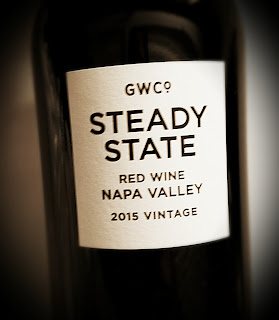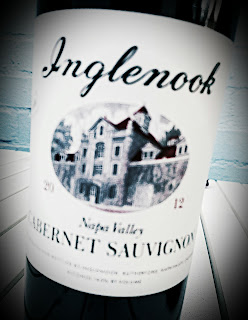James Barbour initiated the vineyards that carry his name today. He was a Governor, a Senator and the Secretary of War, but he is best remembered for his contributions to Virginia's agrarian heritage. He, like his neighbor
Thomas Jefferson, struggled to buck the tobacco trend and grow rotated crops that didn't use up the soil. An Italian bought the parcel in the 1970s,
Gianni Zonin, whose name you have probably seen on bottles of Prosecco. Zonin, also bucking the tobacco advice, planted grapes and made wine. The Zonin family still owns the vineyards, and wines are produced by winemaker
Luca Paschina.
Scheduling changes on my trip prevented me from trying the restaurant at the estate, Palladia, but it gets raves from all over. Next time. I was able to make the half hour or so drive out of Charlottesville for a tasting of the Barboursville wines. Here they are.
Pinot Grigio 2016 -A very refreshing wine, although the grape is not one of my favorites.
Vermentino Reserve 2015 - Lovely acidity and the mark of the earth on it.
Viognier Reserve 2015 - Very nice acidity, but the wine was not a favorite.
Chardonnay Reserve 2016 - It's the only white they make with oak, and it's Hungarian wood. Quite a show that oak makes, if you ask me. A little too much in the wood.
Vintage Rosé 2015 - Rich pink, made from Petite Sirah, Barbera and Merlot. The acidity is great and the palate brings beautiful, light fruit with herbal touches.
Barbour’s Reserve 2015 - Fantastic red fruit and mocha
are a real kick.
Sangiovese 2015 - Big, earthy, smoky. Love it.
Merlot 2015 - Another earthy red.
Cabernet Franc 2015 - This is really good, with great acidity, white and bell pepper notes.
Merlot Reserve 2013 - This is what I want from Merlot - big smoke, earth and a savory coffee
expression.
Cabernet Sauvignon Reserve 2014 - Tons of earth that reminds me a bit of Paso
Robles Cab.
Cabernet Blanc - A sweetie, with 2% residual sugar.
Rosato - Even sweeter, with 4% residual sugar.
Phileo - Sweet Traminette, Vidal Blanc and Moscato blend, 10% residual sugar. This is a lovely dessert wine with floral notes, good with cheese.
Paxxito 2013 - The sweetest, with 12% residual sugar. It's simply beautiful, made in the passito process in which the grapes are air-dried over time. You get raisins and caramel, and since when it that not a great dessert?



















